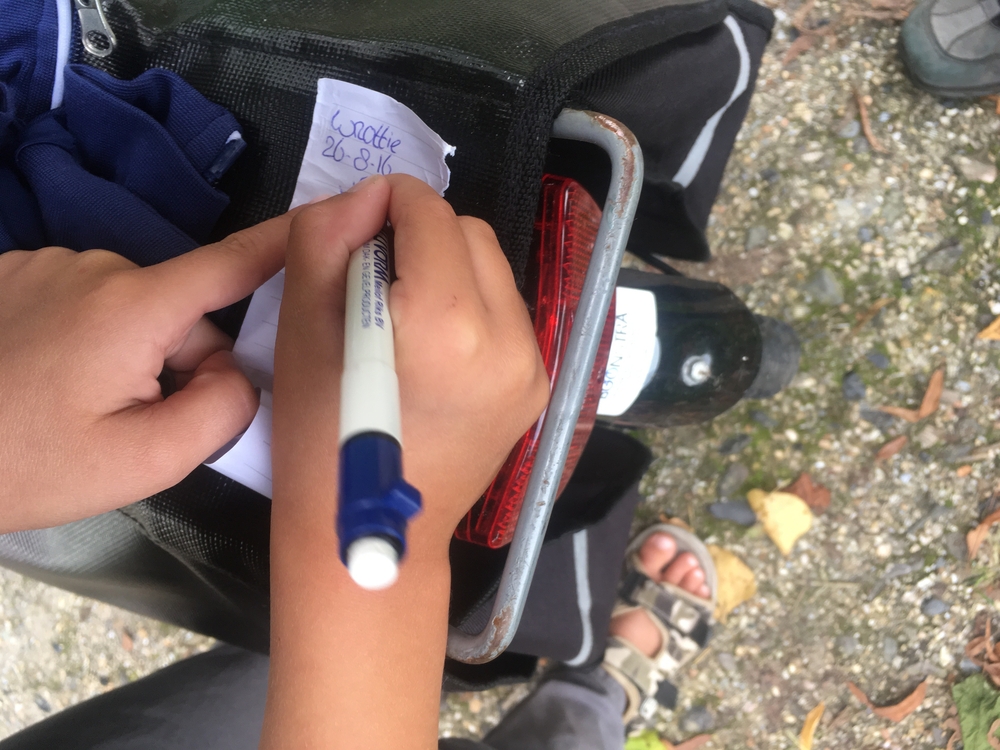In this post, Heather Woodie of Blog, She Wrote introduces three active ways to teach kids about geography. With a little adventure and some simple goals, you can teach your kids about location, latitude and longitude, and physical landmarks while getting active outside. For additional support, visit our units on Geography and Maps & Mapmaking with your young explorers!

Geocaching is like a treasure hunt where you use GPS to find hidden caches on location. Have you tried it with your kids? (SpeedKingz/Shutterstock)
In honor of physical education month, I thought it would be fun to focus on ways we could put together academics with being active. The first thing that came to mind was teaching geography through physical activity. There are so many ways to learn about geography while being active. Today I’m going to talk about three.
Teaching Geography with Nature Walks
Getting out and walking as a family is always time well spent. Try setting some goals to challenge yourselves:
- Make a goal of visiting new sites like state and federal parks and other natural areas.
- Seek out geographically significant places- like glacial formations, U.S. geological survey markers, creeks with eddies, etc.
- Establish a number goal rather than a place goal- Choose the number of walks you’ll try for the year.
- Take walks with a variety of intensities- easy walks and walks with lots of ups and downs.
- Vary the way you walk — feel free to meander, stroll, jog or run!
Teaching Geography with Orienteering & Navigation
Use a compass and find your way or use other tools to do some navigating.
- Triangulation- Kids can find out where you are in nature based on landmarks and a map to pinpoint your location. The Institute of Navigation provides a great lesson on triangulation here.
- Try a sextant- A sextant is an instrument that measures distances between objects and takes altitudes in navigation. Use this tool to determine your latitude if you can find a place where you can see the horizon unobstructed. Looking over water is best, but a field without a tree line can work, too.
Adventures in Sailing, Exploration, and Navigation gives more detailed instructions on orienteering and navigation. Give it a try!
Teaching Geography with Geocaching

Sign the logbook so people know you stopped by- you can usually leave other notes about how easy the cache was to find. (Beachbird/Shutterstock)
Some families love to geocache together. Geocaching is like a treasure hunt where you use GPS to find hidden caches on location.
- Locate caches based on information found on common website devoted to geocaching.
- If you bring something to leave, you can take a cache if there is one there left by the host.
- Sign the logbook so people know you stopped by- you can usually leave other notes about how easy the cache was to find.
- Bike to your geocache destinations.
- You can combine your geocaching goal with a walking goal for more fun.
Tips for Safely Engaging in Physical Activity Outdoors
It’s important to keep a few things in mind when spending time outside especially if you will be tromping around treasure hunting.
- Protect yourself from the sun with appropriate sunscreen, clothing that covers, and a hat and sunglasses.
- Do some stretching before you walk so you are ready for what comes your way without injury.
- Be prepared with proper clothing and footgear for the terrain you will be tackling.
- Be knowledgeable about the weather ahead and prepare accordingly.
- Pack water so you can stay hydrated.
- Take a cell phone in case you need to contact someone.
- Protect yourself from insects and ticks with clothing and repellent.